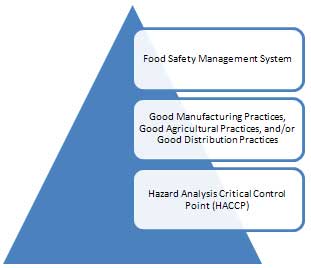
Food safety is an indispensable aspect of public health, hinging on strict enforcement of standards that mitigate the risk of foodborne illnesses and ensure that the food supply remains safe for consumption. The cornerstone of these efforts in the United States is the Food Code, a comprehensive document that outlines best practices for food establishment operations. So, which agency is responsible for the publication of this critical document? The answer lies in the Federal government, particularly the Food and Drug Administration (FDA).
The FDA, as an agency under the Department of Health and Human Services, plays a pivotal role in the oversight and regulation of food safety standards. It is primarily responsible for ensuring that food products are safe, sanitary, and labeled correctly. Within this framework, the FDA develops and disseminates the Food Code every four years, an endeavor that reflects advancements in science and public health best practices.
Upon closer examination, the Food Code serves multifaceted purposes. Firstly, it establishes uniform national standards for food protection and sanitation. This is essential because food safety laws and enforcement can vary significantly from one jurisdiction to another. By promoting consistency, the Food Code aids state and local agencies in formulating their own regulations that are in alignment with national standards, thereby ensuring a coherent approach to food safety across the country.
Another vital aspect of the Food Code is its role in education and training. The FDA, in collaboration with various stakeholders, engages in extensive outreach efforts to educate food workers, establishment owners, and the general public regarding the significance of adhering to food safety protocols. The provisions set forth in the Food Code offer a comprehensive guide on critical areas such as food handling, cooking temperatures, equipment sanitation, and cross-contamination prevention.
In addition to the core functions highlighted above, the Food Code is also instrumental in responding to emerging issues in food safety. As new pathogens emerge and food production practices evolve, the FDA adapts the Food Code to incorporate the latest scientific research and technological advances. This iterative process is crucially responsive to public health challenges, ensuring that food safety measures remain relevant and effective.
A distinctive feature of the Food Code is its adaptability. While the FDA publishes the Food Code, it invites input from a wide array of stakeholders, including state health departments, industry representatives, and academic experts. This collaborative approach ensures that the document reflects the real-world challenges faced by food establishments and incorporates diverse viewpoints on best practices. Thus, while the FDA serves as the custodian of the Food Code, its development is a collective endeavor that underscores the importance of community engagement in regulatory processes.
It is crucial to note that although the FDA publishes the Food Code, the document serves as a model and is not legally binding. Each state decides whether to adopt the Food Code in its entirety or modify its provisions for local relevance. Nevertheless, the widespread adoption of the Food Code demonstrates its significant influence on food safety regulations throughout the nation. As of the latest edition, many states have implemented large portions of the Food Code into their own statutes, reinforcing the unified approach to food safety.
Furthermore, the Food Code’s significance extends to ensuring food safety in various settings, including restaurants, food trucks, and institutional food services like schools and hospitals. Each sector faces unique food safety challenges. For instance, the high turnover rates in restaurants may necessitate more rigorous training programs than in an established institutional setting. The FDA’s guidance through the Food Code contributes to developing tailored training initiatives that meet the specific demands of disparate operational environments.
Lastly, the Food Code encompasses a comprehensive framework to address food safety issues surrounding technological advancements such as e-commerce and food delivery services. As the food landscape continues to evolve, the FDA’s proactive stance in updating the Food Code reflects an understanding that traditional food safety measures need to adapt to emerging delivery models and innovative food preparation methods.
In conclusion, the FDA is the primary agency responsible for publishing the Food Code, which encapsulates a robust and flexible framework for food safety standards across the United States. Through its collaborative development process and commitment to education, the Food Code addresses pressing public health needs while remaining adaptable to the evolving landscape of the food industry. By establishing uniform standards, educating stakeholders, and responding to emerging challenges, the FDA plays a vital role in safeguarding the nation’s food supply, ultimately protecting public health and welfare.
For those involved in food service or food safety, it is imperative to familiarize themselves with the Food Code and its provisions. Understanding the standards set forth in this pivotal document empowers stakeholders to implement effective food safety measures and contribute to a healthier society. As food safety remains a critical public health priority, the ongoing collaboration between the FDA and various sectors of the food industry will continue to shape the evolution of food safety standards, ensuring that the highest level of protection is afforded to consumers.
